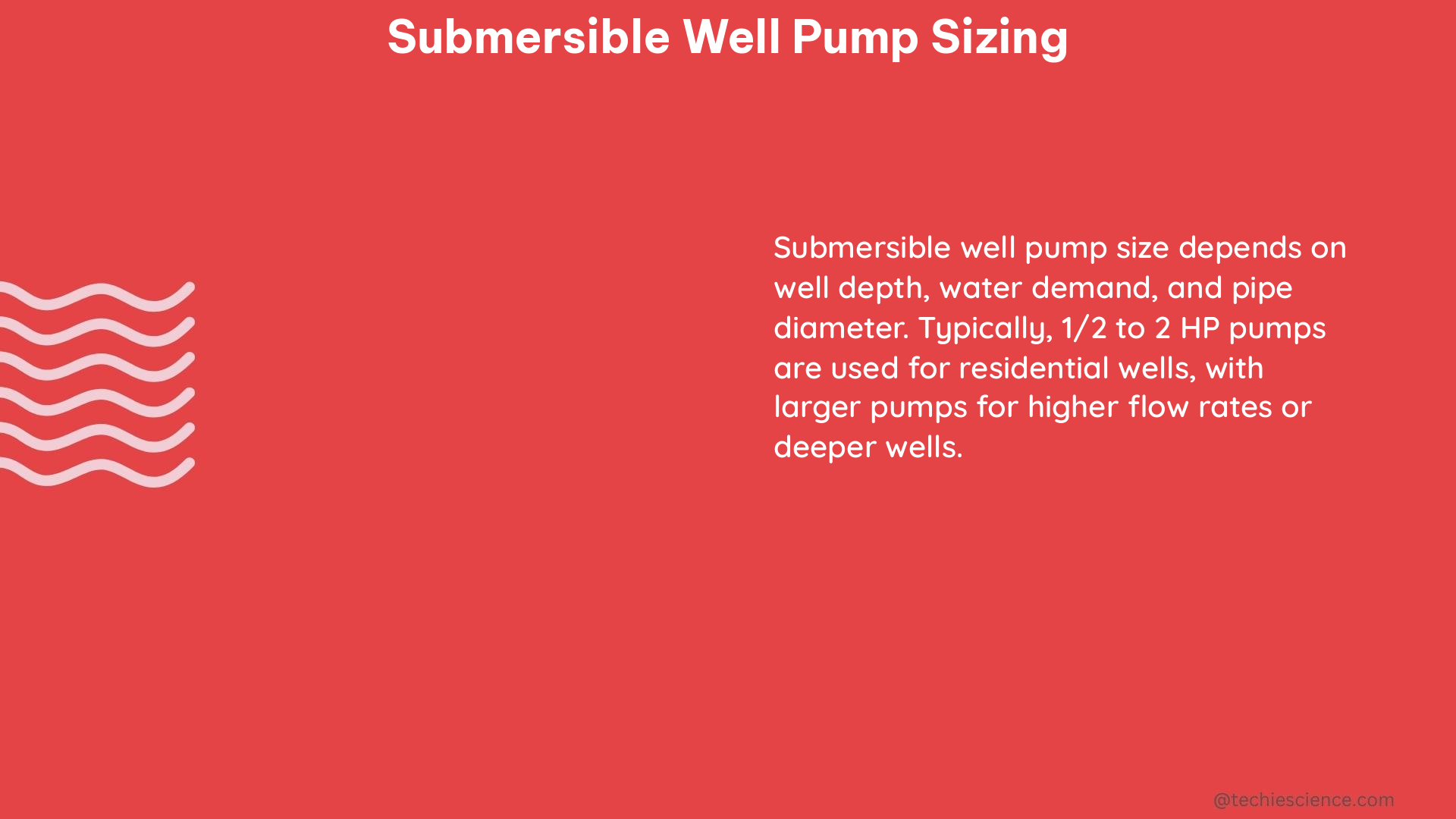Submersible well pumps are a crucial component in providing a reliable water supply for residential, agricultural, and industrial applications. Properly sizing a submersible well pump is essential to ensure efficient and long-lasting operation. This comprehensive guide will delve into the key factors to consider when sizing a submersible well pump, providing you with the necessary knowledge to make an informed decision.
Well Depth and Static Water Level
The depth of the well is a crucial factor in determining the required lift for the pump to deliver water to the surface. This measurement, known as the well depth, is typically expressed in feet. Additionally, the static water level, which is the depth from the land surface to the water surface when the well is not in use, must also be considered. This measurement is also expressed in feet and is essential in calculating the total dynamic head (TDH) required for the pump.
Pumping Water Level and Drawdown

The pumping water level is the depth from the land surface to the water surface when the well is in operation. This level is typically lower than the static water level due to the drawdown, which is the difference between the static and pumping water levels. Drawdown is an important factor in determining the pump’s ability to maintain a consistent water supply, as excessive drawdown can lead to pump failure or reduced well capacity.
Maximum Gallons Per Minute (GPM) Flow Rate
The maximum GPM flow rate is the maximum amount of water that the pump must be able to deliver to meet your needs. This measurement is crucial in selecting the appropriate pump size, as a pump that is too small will not be able to meet the required water demand, while a pump that is too large may be less efficient and more costly to operate.
Total Dynamic Head (TDH)
The Total Dynamic Head (TDH) is the sum of the vertical lift of the water, the friction loss in the piping, and any pressure that needs to be achieved. This measurement, expressed in feet of head, is essential in determining the pump’s power requirements and selecting the appropriate model.
To calculate the TDH, you’ll need to add the following:
– Vertical lift: The distance from the pumping water level to the point of water delivery
– Friction loss: The pressure drop due to the resistance of the piping and fittings
– Pressure requirements: Any additional pressure needed, such as for a pressurized system
Well Capacity and Pump Selection
The well capacity, measured in gallons per minute (GPM), is the rate at which water flows into the well from the aquifer. This factor is crucial in ensuring that the selected pump can meet the water demand without exceeding the well’s capacity, which could lead to pump damage or reduced well life.
When selecting a submersible well pump, it’s essential to choose a model that is appropriately sized for your specific needs. A pump that is too small will not be able to deliver the required water flow, while a pump that is too large may be less efficient and more costly to operate. To determine the right pump size, you can use a pump selection chart or work with a professional well pump supplier.
Power Requirements and Efficiency
The power requirements for a submersible well pump are measured in horsepower (HP). The required HP is determined by the TDH and the desired flow rate. It’s important to select a pump with the appropriate HP to ensure efficient operation and avoid excessive energy consumption.
Additionally, the efficiency of the pump is an important factor to consider. More efficient pumps can save you money on energy costs over the long term, making them a wise investment. Look for pumps with high efficiency ratings, which are typically indicated by the pump’s performance curve or energy efficiency data.
Pump Lifespan and Maintenance
The average lifespan of a submersible well pump is around 7 years, but with proper maintenance and sizing, it’s possible for a pump to last much longer. Regular maintenance, such as checking for wear and tear, cleaning the pump and well, and addressing any issues promptly, can significantly extend the pump’s lifespan.
When sizing a submersible well pump, it’s crucial to consider the pump’s expected lifespan and plan for future maintenance and replacement needs. This will help ensure that your water supply remains reliable and efficient for years to come.
Conclusion
Properly sizing a submersible well pump is a critical step in ensuring a reliable and efficient water supply. By considering the well depth, static and pumping water levels, maximum GPM flow rate, TDH, well capacity, and power requirements, you can select the appropriate pump for your needs. Remember to work with a professional well pump supplier or use a pump selection chart to ensure that your pump is properly sized and will provide long-lasting, efficient performance.
References:
- Aqua Science – How to Size a Submersible Well Pump
- Practical Machinist – Sizing a Water Well Submersible Pump
- Grundfos – Pump Sizing and Installation in Domestic Groundwater Applications
- YouTube – How to Size a Submersible Well Pump
- YouTube – Submersible Pump Sizing Explained

The lambdageeks.com Core SME Team is a group of experienced subject matter experts from diverse scientific and technical fields including Physics, Chemistry, Technology,Electronics & Electrical Engineering, Automotive, Mechanical Engineering. Our team collaborates to create high-quality, well-researched articles on a wide range of science and technology topics for the lambdageeks.com website.
All Our Senior SME are having more than 7 Years of experience in the respective fields . They are either Working Industry Professionals or assocaited With different Universities. Refer Our Authors Page to get to know About our Core SMEs.